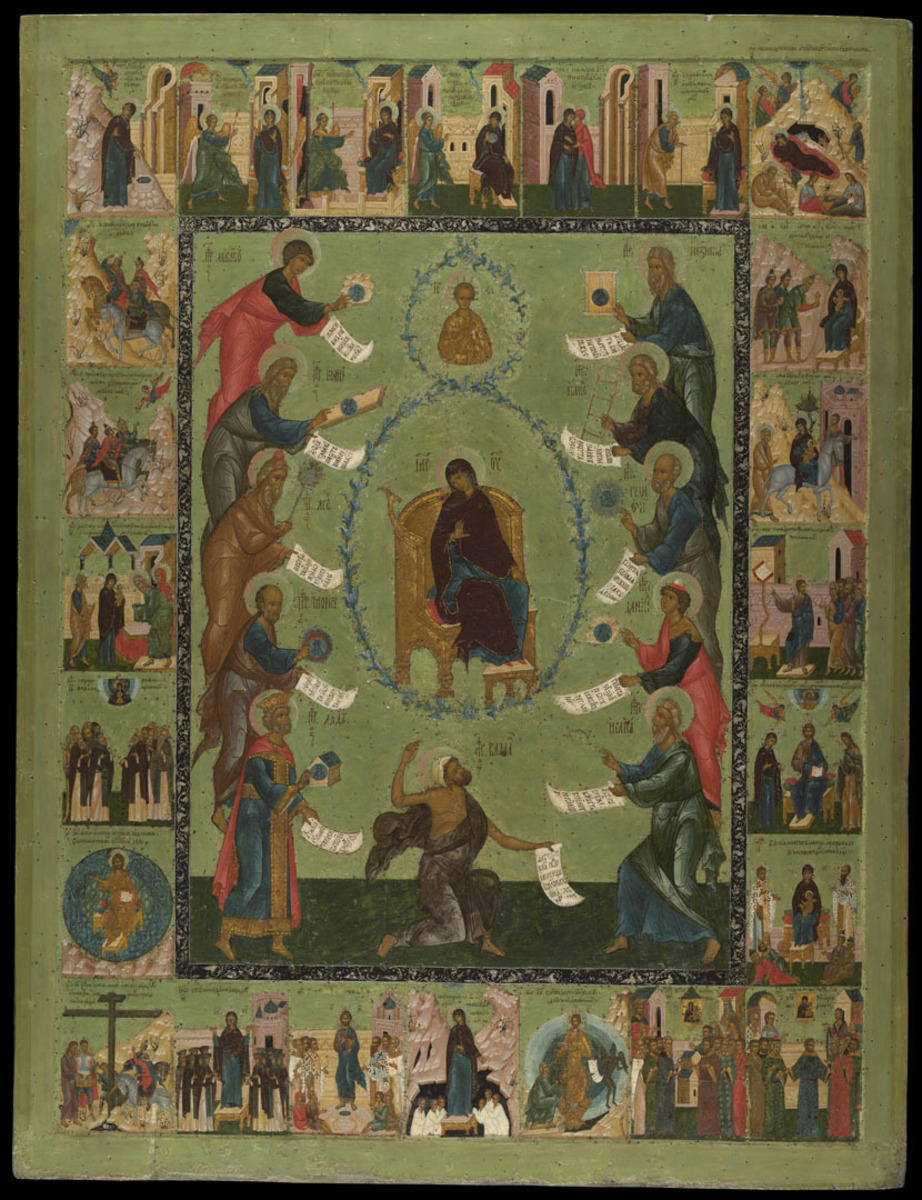Mid-16th century
Copy
The Virgin is shown enthroned in the center; she is surrounded by 11 prophets holding out open scrolls with their prophecies about the incarnation and symbols-attributes with which the Virgin is compared in these Old Testament texts: Prophet Habakkuk is depicted with the ‘overshadowed mountain’, Ezekiel — the ‘impassable gate’, Jeremiah — the Stone Tablets of the Law, Jacob — the ladder, Aaron — the rod which miraculously blossomed forth almond flowers, Gideon — a fleece, Moses — the burning bush, Daniel — a mountain, David — the temple and Isaiah — tongs. The Prophet Balaam is shown at the bottom of the icon, pointing upwards towards a star. The blue medallions in all the symbols contain an image of the Virgin. The prophets praise her as the holy ‘prepared altar’, ‘inspired temple’, ‘chamber of eternity’, ‘ark gilded by the Holy Spirit’. The half-figure of Christ Emmanuel is depicted above the Virgin. Blue sprouts surrounding the Virgin and Christ remind of the Tree of Jesse and correspond to numerous poetic comparisons of Christ with the Tree of Life and the Virgin — with the vine and blossoming paradise. The Tree of Jesse symbolized the unity of the Old and New Testaments and glorification of the Virgin revealed the main belief of the New Testament church about the Incarnation. The iconography of ‘Praises of the Virgin’ was formed in the Byzantine art. One of its literary sources could be a hymn from the canon of St. Germanus I of Constantinople (8th century).
The original icon is kept in the State Russian Museum at present.



